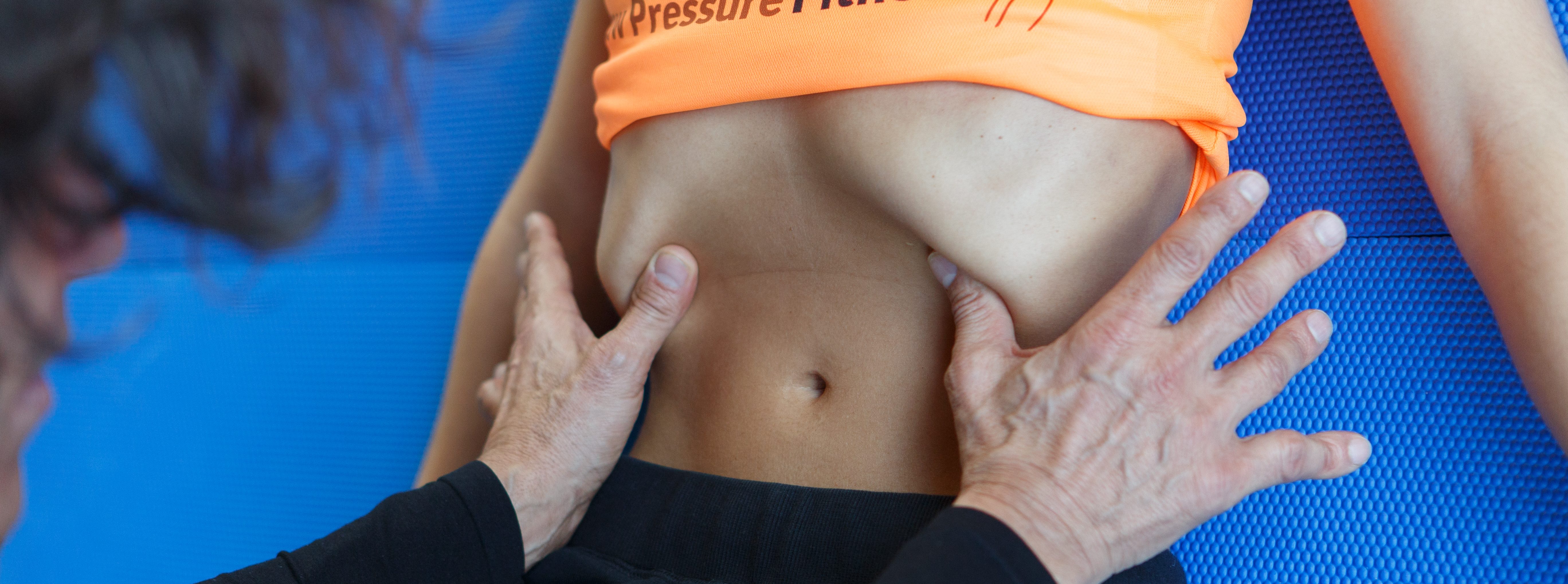The core or cylinder formed by the diaphragm (at the top), the pelvic floor (bottom) abdominal muscles (front) and lumbar (back) all work synergistically to create stability to the spine. But an imbalance or excessive tone in any of these points will have observable repercussions on the other parts of the body. We have one clear example in the breathing pattern and it´s influence in posture and pelvic floor disorders.
At this point we should remember that the diaphragm is the most important inspiratory muscle, which sometimes can condition respiratory, postural and circulatory function at the same time. The diaphragm works in a coordinated manner with other muscles for trunk stability and has important direct and indirect relationships through fascial chains. We cannot truly understand the breathing mechanism without understanding the involvement of the abdominal muscles as well as postural analysis. There is growing evidence for differential involvement of the abdominal wall in expiratory function. So, there is a potential role of combined pelvic floor and abdominal muscle training for the treatment of respiratory diseases. Of note, retraining and improving breathing patterns are essential for preventing injuries and for enhancing quality of life.
For breathing training: Low Pressure Fitness
The inspiratory muscles can be weakened due to aging, respiratory diseases, obesity, stress, smoke, and weight lifting. The diaphragm can be “overused” so it gets hypertonic, and descends from its natural position. When this happens, any effort would result more hyperpressive in the abdominal cavity.
For breathing training there are two different approaches: strengthening which can lead to excessive rigidity or integrating breathing patterns which can help internal and miofascial release. The second approach is the one emphasized by Low Pressure Fitness.
Low Pressure Fitness is an integrated and global training program which focuses on posture and breathing. It is performed via the bases of pranayama Uddiyana banda in yoga (ribs opening and expiratory apnea), in conjunction with diaphragmatic breathing.
During the abdominal vacuum “rib cage lift”, the inspiratory muscles contract and consequently the diaphragm rises, sucking up the pelvic viscera and fascial connections and decreasing intraabdominal pressure. This provokes a highly demanding postural training and a great help in order to raise and tone the pelvic floor muscle group and reposition the viscera.
In addition, retraining the action of the respiratory system leads to a decrease in mental anxiety and sometimes which, in turn, leads to gains in self-esteem. The person feels better with themselves and with greater body awareness.
Incorporate a global exercise program such as low pressure fitness to improve your posture as well as your abdominal and pelvic floor muscles by retraining your breathing pattern.

